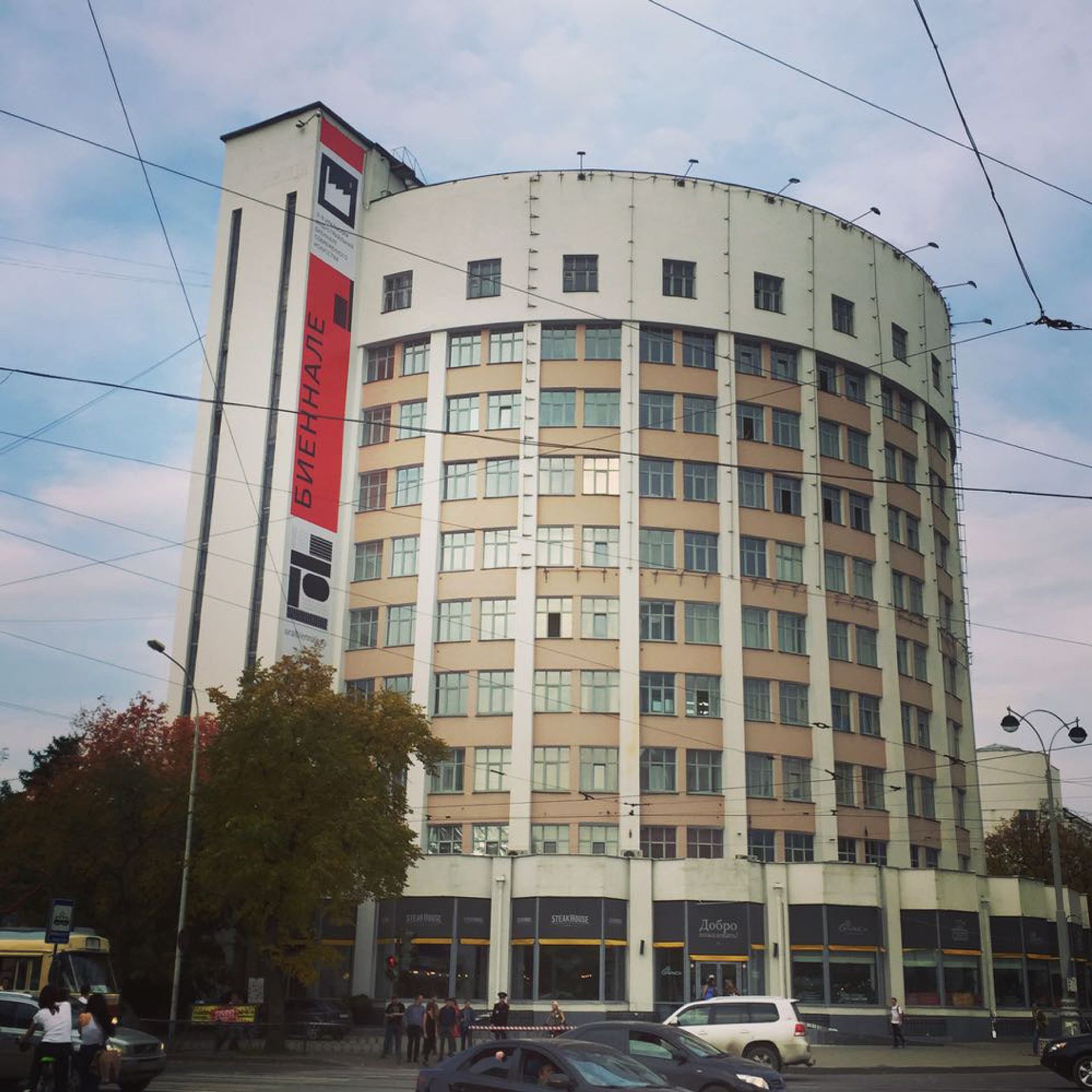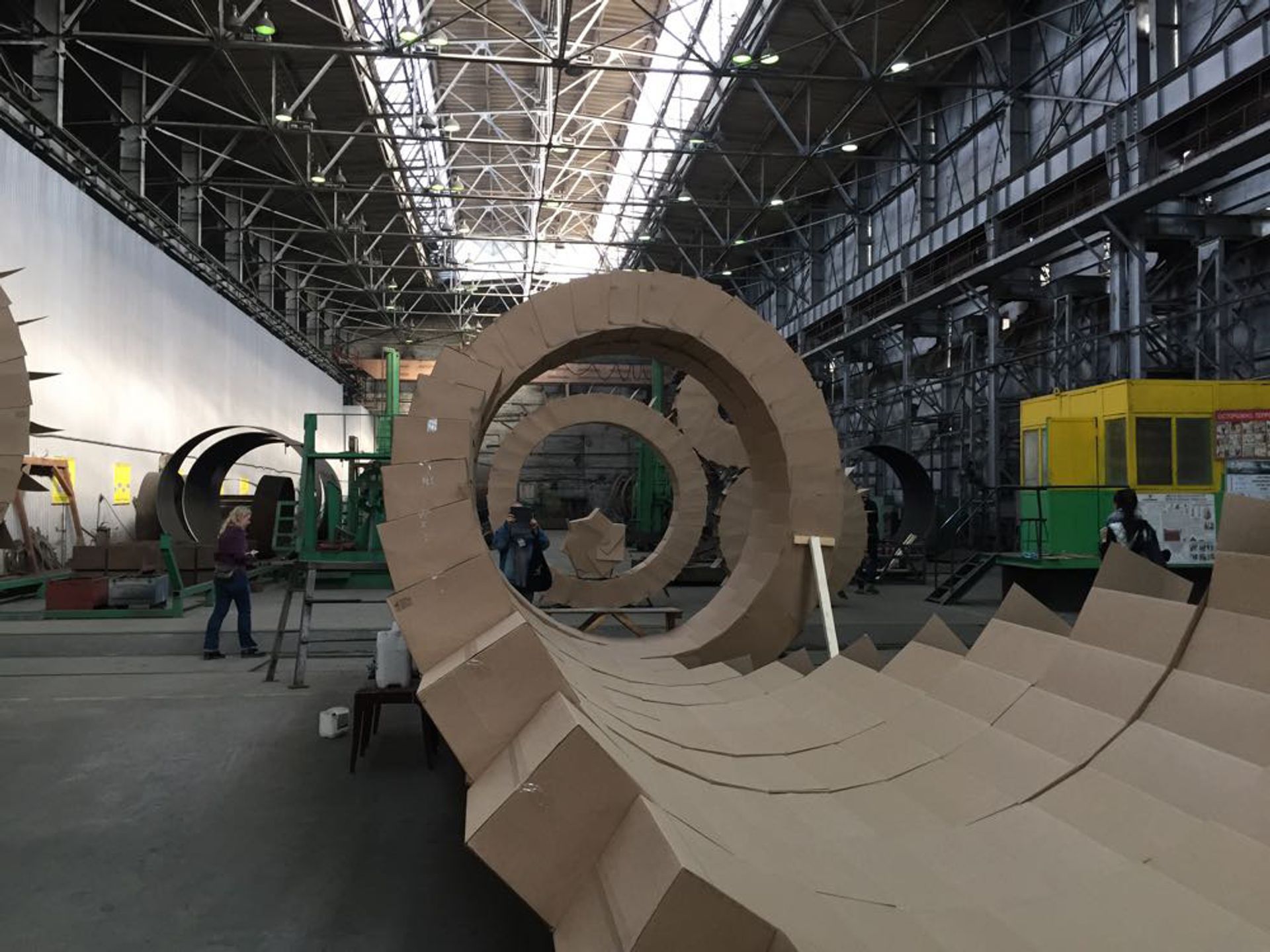Yekaterinburg, Russia’s fourth-largest city and about a two-hour flight east of Moscow, straddles Europe and Asia. So it is unsurprising that the third Ural Industrial Biennial of Contemporary Art, which opened there on 9 September, turns its focus this year to China. Directed by Alisa Prudnikova and co-curated by Biljana Ciric and Li Zhenhua—both China-based curators—the exhibition tackles the theme of Mobilization in a nod to the region’s military-industrial heritage.
The city may not be widely known internationally, but it has had its trysts with history. The last Russian Tsar and his family were brutally killed in Yekaterinburg in 1918. Under Stalin, the city became a major industrial center, welcoming Communist dignitaries like Mao Zedong and Fidel Castro.

Perhaps the most striking feature of the biennial is its location—the abandoned Iset Hotel, which once served as residences for KGB officers. Built in the 1920s to 1930s, the hotel was designed according to utopian Constructivist principles, lacking private bathrooms and kitchens to foster collective living and identity.
The biennial is laid out vertically over nine storeys of the hotel, with each floor sub-divided into hotel rooms, which gives the impression of numerous mini-exhibitions, for better and for worse. This was particularly apparent in the three-storey section curated by Zhenhua, No Real Body (the biennial is in effect divided up by the two curators).
The building’s connection to the KGB has prompted a number of works that reflected on surveillance and privacy. Shi Yong’s The Other On-Site Sound: The Private Space Going Public (2015) features recorded sounds from a private apartment that are played into the exhibition space. Marc Lee’s Me (2015), meanwhile, collects social media posts with the hashtag #me from around the world, including their geo-location, thus potently highlighting digital mass surveillance.

Ciric’s section is particularly strong in drawing out connections to Yekaterinburg’s history. Wong Hoy Cheong’s UnCover (2015) catalogues manhole covers from politically strategic locations in the city. Li Liao’s Office—Ekaterinburg (2015) presents an eight-hour video of the empty office of the charismatic but controversial mayor Yevgeny Roizman when he was temporarily forced out earlier this year, probing the relation of power and presence. A number of other works deal with collective identity as well as labour relations. One murmured complaint that could occasionally be heard among visitors, however, was that there are not enough Russian artists represented.
Along with an artists’ residency exhibition and several off-site events, the biennial includes a fascinating exhibition curated by Ilya Shipilovskikh on the history of Chekist Town (Gorodok Chekistov), the planned community that housed Yekaterinburg’s Soviet officials. The archival photographs and documents tell the backstory of the Constructivist compound and some of the people who lived there. But the exhibition also puts the utopian ideal of the town into perspective against the brutal conditions of reality.

